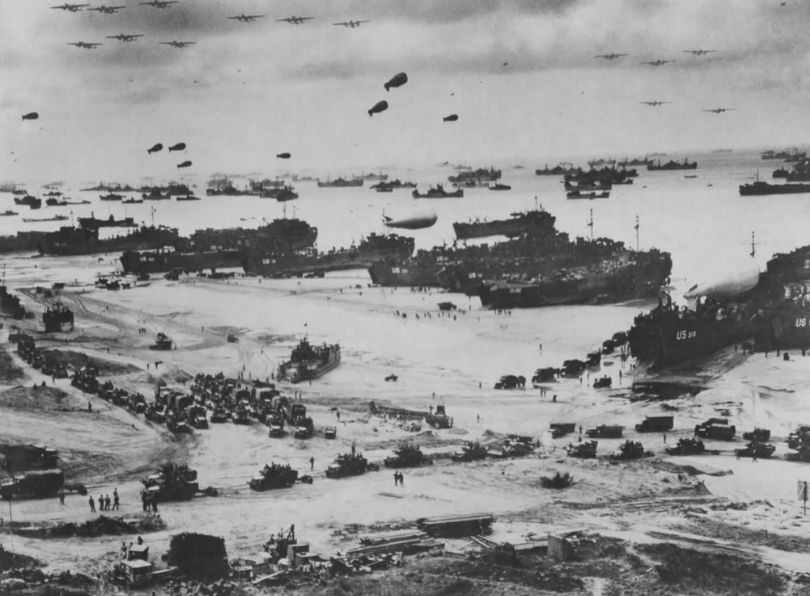Discover the courage and bravery of the men and women who helped make the Normandy landings a success
The Normandy landings of 6 June 1944, known as D-Day, were a massive feat of planning and execution, giving the Allies a foothold in North-West Europe from which to liberate the continent of Nazi occupation. D-Day was the largest amphibious invasion in history and witnessed incredible acts of bravery and human endeavour, from the agents dropped behind enemy lines to the sailor who rescued a stranded wounded soldier on the beach. We’ve been exploring these remarkable stories and individuals in our extensive collections and newspapers.
Dropping behind enemy lines in the lead-up to D-Day
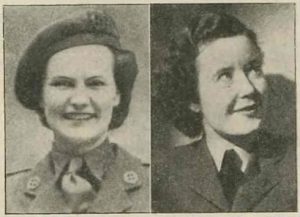
Before a Horsa glider left an airfield or the airborne troops parachuted behind enemy lines, before the landing craft cut their way through the waves and the infantry touched down on the beaches of Normandy, vital work was carried out to help with the D-Day invasion.
Sonya Butt and Maureen O’Sullivan were Special Operations Executive (SOE) agents who parachuted into France in the days and months leading up to the Normandy landings. Their work is briefly touched upon in our Historical Documents Library:
‘Young W.A.A.F. [Women’s Auxiliary Air Force] agents, they were among those dropped by parachute before D-Day to contact the Maquis [French resistance] and render other valuable services to the Allies. Maureen O’Sullivan crawled through hedges and ditches to watch German troop movements, sending and receiving coded messages to and from London through the medium of her portable wireless set.’
The average life expectancy of an SOE wireless operator was six weeks, underlining the sheer danger of such work carried out by Maureen and other operatives dropped behind enemy lines. Maureen was awarded the MBE in 1945. The work carried out by agents like Sonya and Maureen contributed greatly to the success of the Normandy landings.
Wrong beach doesn’t hold naval commando back
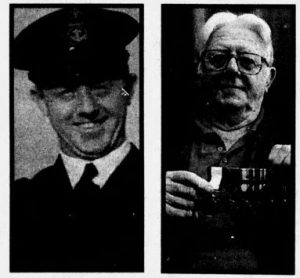
Royal Naval Beach Commando Ronald McKinlay was in the thick of the action during the Normandy landings. The beach commandos were vital to the Allied supply chain and were tasked with organising the movement of personnel, vehicles and supplies on the landing beaches. Ron served with P Commando, who were destined for Juno Beach on D-Day. They were to go ashore and set up landing signs ahead of the Canadian contingent destined for Juno Beach. 19-year-old Ron told his girlfriend Iona to listen out for news of a major offensive and to buy an engagement ring upon hearing that troops had successfully landed on the beaches of Normandy.
That time had finally arrived. As Ron and his comrades neared the shore, their landing craft was hit by a shell and drifted away from Juno Beach. A passing landing craft picked up the crew, who ended up landing on Sword Beach instead. After touching down on French soil, in order to reach his intended destination, Ron had to cross a dangerous stretch of coastline guarded by the enemy. Delving into our London Gazette, Military Notices, 1939-1945 collection, we learned of Ron’s brave actions during the landings:
‘Petty Officer McKinlay was put ashore between noon and 1400 hours on 6 June. Finding himself at some distance from his pre-arranged destination he made his way along the beach and took charge of a party of Naval ratings and Army ranks who were bound for the same point. Single-handed, he silenced two enemy strong points on the way with hand grenades. Later, on an open stretch of sand which was under fire from enemy snipers, disregarding his own safety, he went to the rescue of a wounded man and brought him safely to cover.’
Ron was awarded the Conspicuous Gallantry Medal for his actions on 6 June 1944. He continued to serve with the Royal Navy after the war and was awarded the Long Service and Good Conduct Medal in 1957.
With the Airborne forces on D-Day
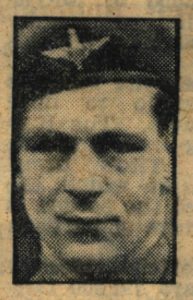
Glasgow-born Lieutenant-Colonel Alastair Stevenson Pearson of the Parachute Regiment, Army Air Corps, was in the thick of the action after dropping behind enemy lines in the early hours of 6 June 1944. But this was far from his first taste of action.
Prior to D-Day, Lt.-Col. Pearson had been awarded the Distinguished Service Order (DSO) with two bars (the bars representing subsequent acts of gallantry). The DSO was gained for gallant and distinguished services in North Africa while his first two bars were for further gallant and distinguished services in North Africa and later Sicily. His third bar to the DSO came for more heroic acts, this time on D-Day and in the days following the landings. Lt.Col Pearson’s entry in our fascinating Companions of the Distinguished Service Order, 1923-2010 collection makes for compelling reading and provides an insight into his actions on D-Day and the following days:
‘For outstanding courage and devotion to duty. Lt.-Col. Pearson dropped at 00:50 hrs on D-Day, 6th June 1944. He was immediately wounded by rifle fire in the left hand. Disregarding his wound he organised his depleted Battalion, some 180 strong, into two company groups and successfully engaged the enemy at Bures and Troarn enabling the bridge blowing parties to carry out their tasks with complete success. On the evening of D-Day he was forced to undergo an operation for the removal of the bullet from his hand but immediately resumed command of the Battalion on its conclusion.
On the night of D Plus 1, he personally led a patrol of 40 men some 4 miles behind the enemy lines to evacuate wounded reported at the village of Bassenville. This necessitated the double crossing of the River Dives by dinghy. The patrol, as a result of his skilful leadership, was entirely successful and eight wounded men were rescued.
On D plus 2 he personally supervised the operation of a strong fighting patrol which inflicted heavy casualties on the enemy in Troarn.
On the night of D plus 6 he personally led a patrol of some 70 men to the village of Roucheville [Rocheville] and engaged the enemy position to the North of the village while his RE [Royal Engineers] detachment successfully cratered the only remaining road for lateral communication left to the enemy in the District.
On D plus 9 the enemy attacked the Le Mesnil position in strength. Lt.-Col. Pearson conducted the battle personally through the whole attack and was tireless in his visits to the forward companies. When the enemy, supported by S.P. [self-propelled] guns, started to penetrate between the forward positions, he moved forward with the counter attack force handling his own men and [a] 17 pounder S.P. gun with such success that the enemy infantry and self-propelled guns were forced to withdraw in some disorder. Throughout the day he moved amongst his troops under artillery, heavy mortar and machine gun fire and his conduct was an inspiration to the whole Battalion. By his brilliant handling of the Battalion during the first week of the operation he was able to hold off a numerically superior enemy from the vital high ground at the South end of the Bois De Bavent.’
Bravery of D-Day armour supporting the infantry
Lance Sergeant (L/Sgt.) Herbert Matthew Scaife took part in the Normandy landings of 6 June, driving on to Gold Beach on D-Day with number 82 Assault Squadron of the Royal Engineers. He was operating an Armoured Vehicle Royal Engineers (AVRE), an armoured fighting vehicle based on the Churchill infantry tank which could carry a wide range of special combat engineering equipment.
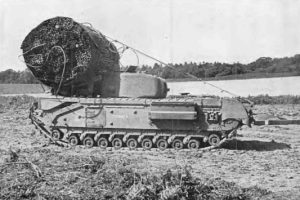
For his actions on the opening day of the invasion, L/Sgt. Scaife was awarded the Distinguished Conduct Medal. Below aere details of his incredible actions, as detailed in our Recipients of the Distinguished Conduct Medal, 1939-1945 collection:
‘L/Sgt. Scaife was comd. [commander] of an AVRE which landed on Le Hamel [Gold] beach at H hour on 6 June 1944. His AVRE was one of a half-troop of three. The plan for this half-troop was to proceed, under comd. of the Tp. [Troop] Officer as soon as they had got through the beach minefield to Le Hamel and Asnelles in close support of the assaulting infantry.
In the event, L/Sgt. Scaife’s AVRE was the only one to get clear of the beach minefield in the early stages of the assault. Observing this, L/Sgt. Scaife, without waiting for further orders, proceeded at once to the scene of the fighting in Asnelles and Le Hamel where the assaulting infantry were being held up by fire from the buildings at the top of the beach, particularly the Sanatorium buildings. On the way he noted that a gun in a thick concrete emplacement at the eastern end of the Sanatorium which enfiladed the beach was still firing.
L/Sgt. Scaife brought his AVRE close into the Sanatorium from the rear and fired a Dustbin [mortar bomb] from his Petard [short mortar barrel] at 50 yards range. This destroyed a M.G. [Machine Gun] post and induced a large number of German defenders to surrender, besides allowing the infantry to get in and mop up. L/Sgt. Scaife then attacked the gun emplacement, scoring a direct hit through the rear opening with his first hit, completely wrecking the gun and killing the crew. He then proceeded through Le Hamel with a party of 1 Hamps. [1st Battalion Hampshire Regiment] destroying M.G. nests which were holding up the mopping-up party with close range fire. L/Sgt. Scaife displayed great initiative and personal courage, in addition to the most soldierly qualities, in thus tackling single-handed and without hesitation a task which had been allotted to three AVRE under command of an Officer. He did so, moreover, knowing that his only offensive weapon was the Petard, only recently issued and fitted to the AVRE, whose potentialities he did not know since he had no previous opportunity of firing it at a substantial target.’
We believe that Scaife was commissioned as an officer in the Royal Engineers in October 1944, as detailed in our British Army lists.
Need help researching your WWII ancestors? Whether they took part in the Normandy landings or served in the Far East, our guide will help you discover the essential details of their military service.
Cover image ©NARA, from our WWII US Air Force Photos collection
Sources
Combined Operations, Royal Naval Commandos, accessed June 2024.
National Army Museum, Special Operations Executive, accessed June 2024.
Noonans, Past Catalogues: Orders, Decorations, Medals and Militaria (26 & 27 September 2018), Catalogue, Lot 64, accessed June 2024.
The Online Tank Museum, Churchill A.V.R.E., accessed June 2024.
War Machine [digital magazine], Volume 10, pp2230-2231, accessed June 2024.

